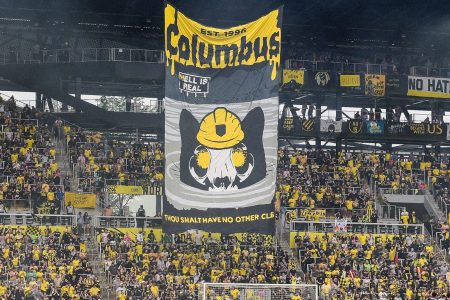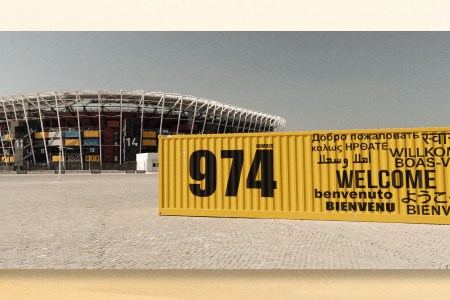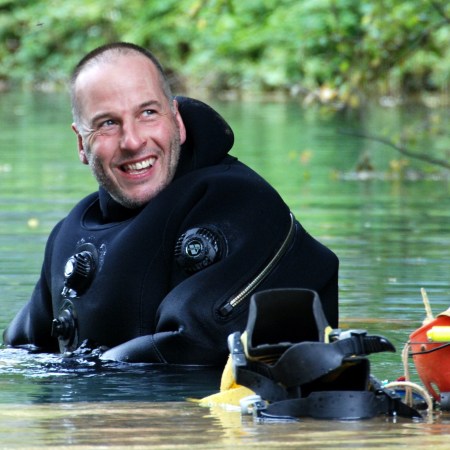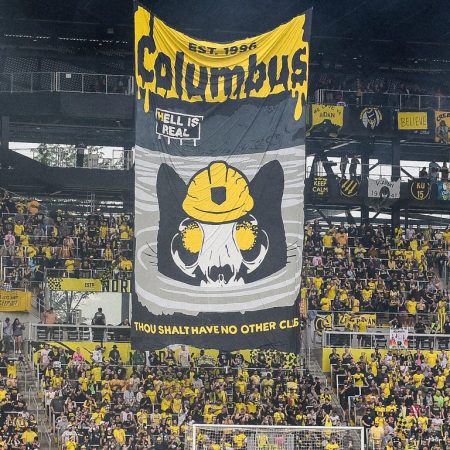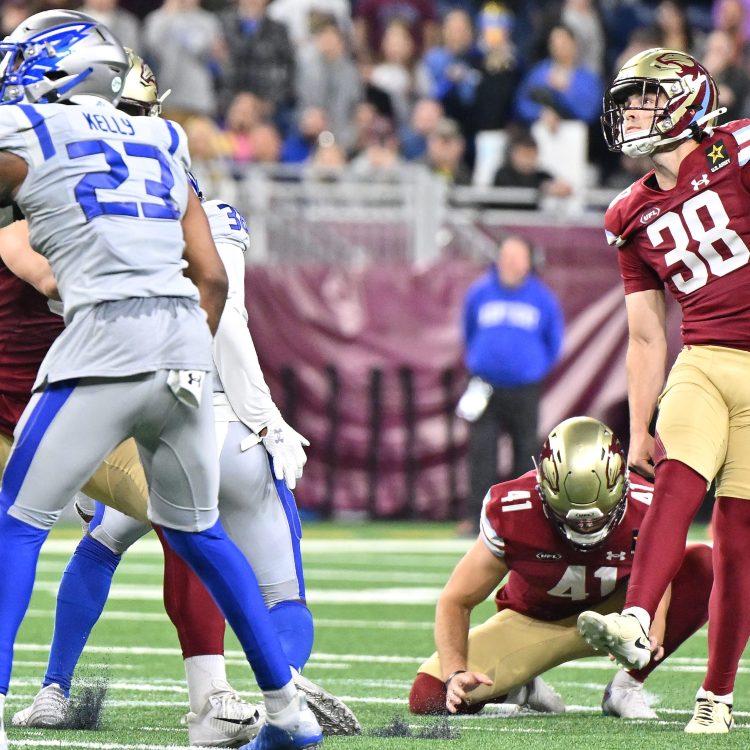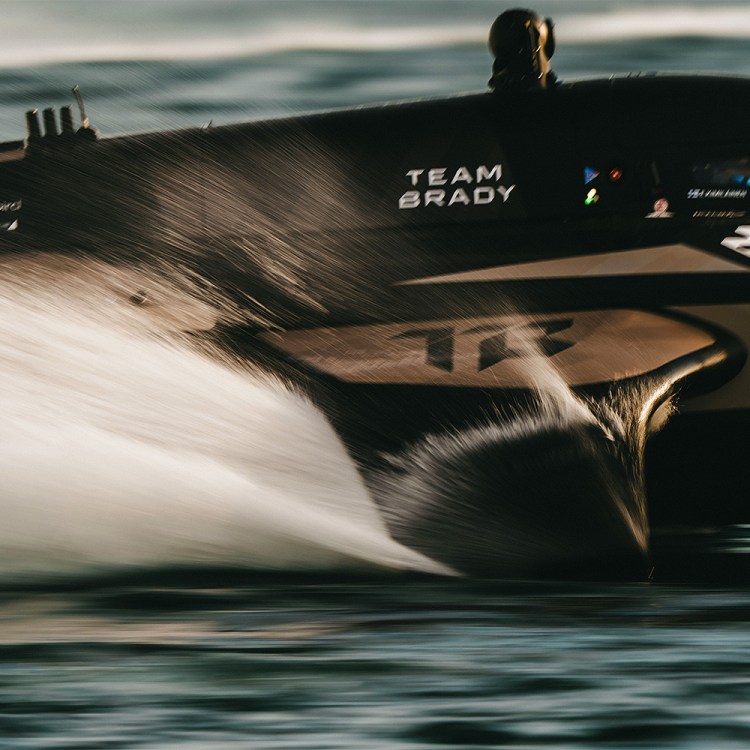It’s sometimes sunny in Wrexham, and then the clouds roll in and the sky bursts and the town returns to normal. If you’re paying attention, it’s possible to be caught in the exact instant that the rays give way to the rain, but who ever is? These moments happen everyday; they pass without incident or reflection. You go into the grocery store, and once you finally emerge you have to hurry to your car. You hadn’t packed a jacket. Or you get lost in your phone for a bit, sitting on a park bench, until one fat drop lands in the middle of the screen and breaks the spell.
Chants, Cheers and Beers With the Most Powerful Fans in Sports
We embedded with the Columbus Crew superfans known as The Nordecke for one wild weekend.On September 24th, a Saturday, 9,970 people in North Wales found themselves frozen in one of these moments. I was one of them. It was late in the first half of Wrexham AFC’s match against Torquay United, a seaside side from Devon, and the home team was up two goals to none. They wanted another. Wrexham was pushing towards the Kop, the condemned section on the Racecourse Ground’s southeastern flank, once the preferred bleachers of the masses — the cheapest, most fun ticket — now a heap of jagged stone and weeds under a dark canopy, a suitable opening shot for a zombie film. But there was more than enough noise from the club’s horseshoe of supporters; on the opposing side, local lads sang louder yet, their arms stretched forth like enraptured Evangelicals, and along the midfield, season ticket holders white-knuckled Welsh flags as if cradling bayonets.
Then it happened. A shimmer — the sun had made an unusual decision, to make its last stand just over the Kop, and the sprinkles and beams met head on in the battlefield, stagelighting Ollie Palmer (he of the 6’5″ frame, and the 300,000-pound transfer fee, an unheard-of ransom in the National League) as he dribbled the ball past one defender, then another, then buried it into the back of the net. The screaming fans seemed to understand: this wasn’t a rain shower. This was just a wink. It would never happen again. The Kop was on fire, Palmer’s strawberry jersey glowed like a dying sun as he raced to share the moment with the screaming fans at the touchlines, and the rain couldn’t ruin the parade. If anything, it just turned everything shiny. The pitch, the seats, the whole world over.
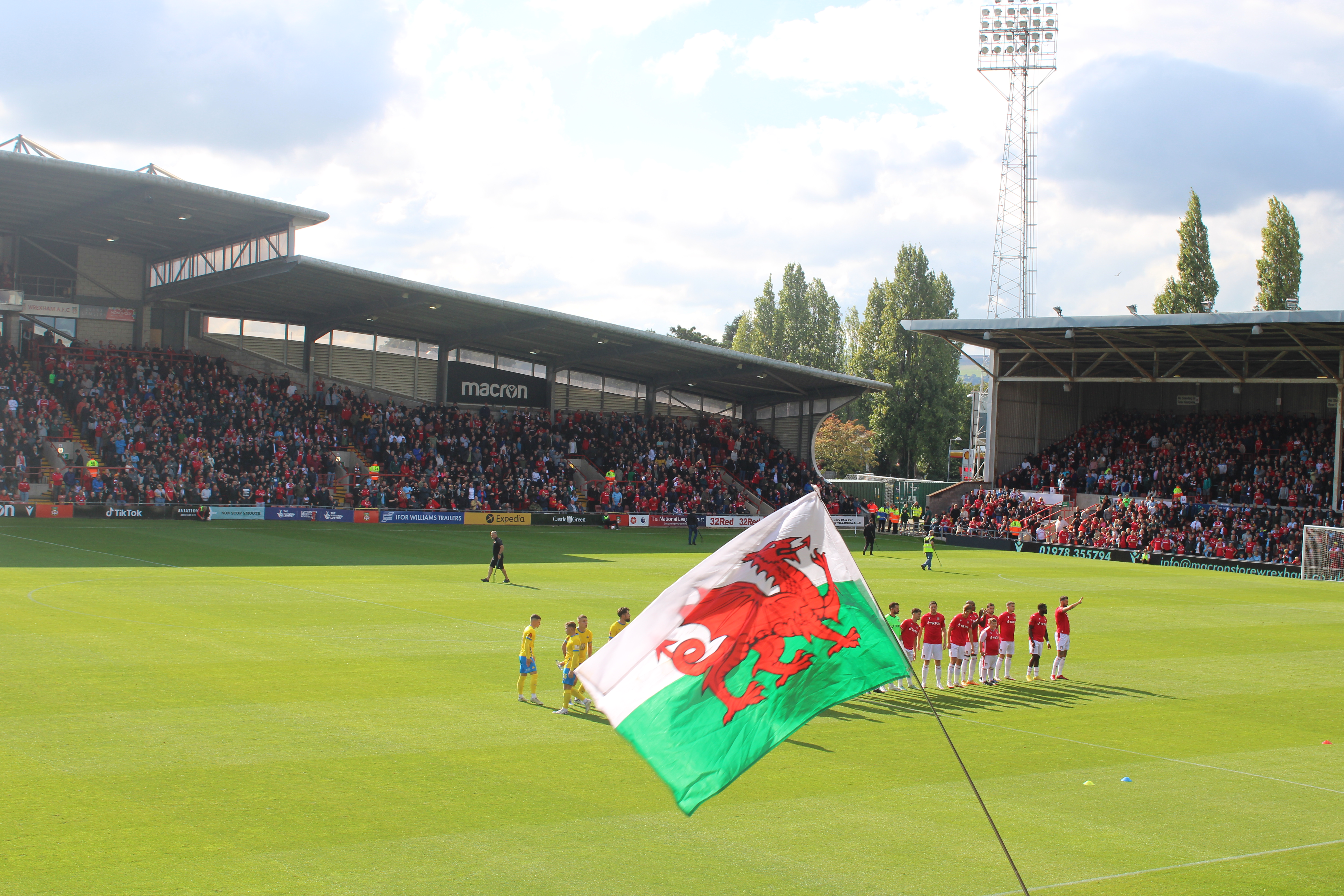
There have been questions, obviously, ever since Ryan Reynolds and Rob McElhenney became co-chairmen of the third-oldest professional football club in the world in November 2020. Welcome to Wrexham, which premiered in late August, and is currently releasing episodes weekly on Wednesday on FX, has answered many of them: this is not a Ted Lasso-inspired publicity stunt, the duo did spend around $3 million of their own money to take over the franchise, and as Wrexham plays within the English tier system, the club theoretically could be promoted all the way to the Premier League, to one day line up against a titan like Manchester City…which plays a half hour away, but exists in a different solar system entirely, where superstars from Norway square off with superstars from South Korea, lucrative TV deals reel in billions in revenue and, in some cases, foreign governments even function as de facto ownership groups.
While the promotion lever — a multi-million pound contest of chutes and ladders — is unfamiliar to many Americans, it’s elemental to Reynolds and McElhenney’s mission and more or less the barstool pitch for why someone with little soccer knowledge might want to watch the show. How far can Wrexham (never a superpower, but once a proud club), ascend under its glittering new stewardship? After years of predatory ownership, which saw players leave, bleachers crumble and local handymen and shop owners form a board to float Wrexham AFC from a descent into semi-pro anonymity, can a surge of dollars and international interest save a team and a town? That’s the goal here. From an objective, sporting perspective, all a casual viewer needs to know is that Wrexham is desperate to leave this lowly tier of English football behind for good.
Most American media coverage has likened the situation to a minor league baseball team slipping from Triple A, to Double A, to Low A+, to the wilds of an offseason winter league, until all contracts are exhausted, the franchise is forced to fold, and the players end up entering a Sunday afternoon beer league. But that’s a fraught comparison, which ignores that there are few Americans with fanatic allegiance for a team like the Rocket City Trash Pandas. A better, yet still wildly imperfect analogue might be an alright Division 1 college football team, with some manner of a 20th century heyday (say, a win over Notre Dame or Penn State in the 1980s), falling prey to unscrupulous boosters and poor recruitment practices, on its way to an embarrassing divisional or conference reassignment.
A Non-Soccer Fan Visits The World Cup 2022 Sites — and Narrowly Survives a Desert Safari
Our writer went to Qatar to preview the host city for the world’s biggest sporting event and (maybe) learned to love the beautiful game in the processJust as an autumn Saturday without college football is virtually unthinkable in so many of America’s mid-sized satellite towns, weekends in North Wales would be quieter, emptier, less colorful without a match at the Racecourse Ground, or a bus trip to the south of the country or east of the border to take on a hostile foe. The games divide the days into elemental before and afters: breakfast, a walk, the sea of red, all the songs, filling into the stadium, the match, the result, whatever mood that brings, the sun saying goodbye, now dinner, or a drink, or a smoke, or a brawl by the train. What would they do without this? What would we? This sort of fandom is a cure for aimlessness, the death of loneliness, a hair tousle from the heavens that there just might be a point after all.
Reynolds, McElhenney and their production companies have earned due praise forWelcome to Wrexham, currently averaging millions of viewers an episode, which has subverted today’s standard, camera-in-the-locker room sporting docuseries. They didn’t have to fiddle with that script, not really. Look to Hard Knocks, Last Chance U, All or Nothing, Sunderland ‘Til I Die, or Formula 1: Drive to Survive (the leading reason the sport finally broke into the United States). These series have succeeded because they offer fans a chance to finally see the interior of recognizable players’ homes, or watch a coach ream a captain for showing up late to practice. They contain fights and curses and untold stories of injuries or hangovers that may or may not have impacted a game or race you remember watching a year or two ago. And if you don’t care about the sport, or the team, there’s enough human interest there to get to know the athletes and care about them within the span of a couple episodes, whether they’re regularly winning Grands Prix or fighting for playing time at a JUCO.
In Welcome to Wrexham, though, the showrunners have elected to devote just as much time to the lives of those around town: house painters, cancer patients, fans who’ve spent their adult lives making the Racecourse Ground disability friendly, fans mired in multi-year bans from the stadium for hooligan activity. It’s a full slate, with a merry-go-round of side characters (many of whom seem to know of each other, or at times intersect on-screen, like any good Simpsons cold open) and infinite stories to tell. In an interview with GQ earlier this year, Reynolds got so excited about Wrexham’s propensity for narrative that he rolled out a breathless, bizarre metaphor: “It’s raining stories, this town,” he said. “We need a titanium umbrella, because there are people hitting it.” Still, there’s one story Reynolds and McElhenney are curiously yet to tell in their docuseries, which I stumbled into within 12 hours of arriving in town.
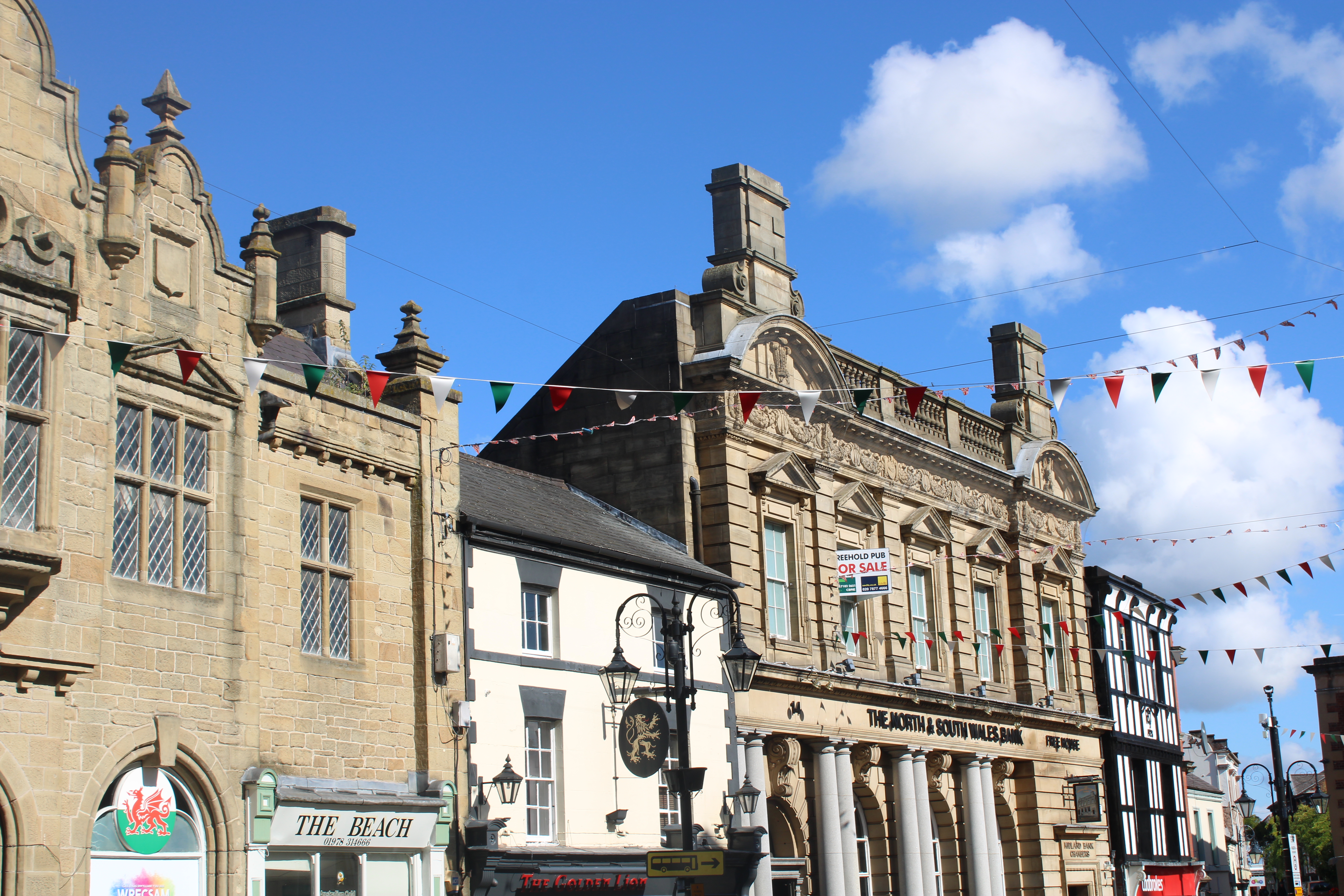
It started for me that Friday morning, the day before the match, as I was standing on the touchline at an empty Racecourse Ground, making chit-chat with Wrexham’s communications director and blinking at the glittering green grass. I was tired. I’d gotten in the night before around 11 p.m., after a three-hour train from London. It was dark and wet and the three or four other people who got off at the stop all had pick-ups waiting in the car park. I pushed into the station’s only building with a light still on, where two men and a woman were drinking orange soda and laughing at something on a flickering TV. I asked them where I could find a taxi. One of them simply nodded and grabbed a pair of keys from the table. We climbed into a Volkswagen for what turned out to be a five-minute drive. He said it was the scenic route — at one point excitedly gesturing to a view of the Racecourse Ground, which I was unable to spot through the fog — and as he dropped me off, he asked if I was hungry. I said sort of. No fear, he shared, if you’re feeling peckish, there’s a “Kentucky” down just down the street. I checked into the The Wynnstay Arms, one of those historic pubs where probably too much has happened (the Wales National Football team was founded here, and one night, as magistrates drank heavy into the night, they crossed the street to rewrite the town’s curfew laws, so they could keep the evening going), and for some reason, the employees were already celebrating Christmas. There was a tree surrounded by gifts at the entrance. It was a difficult night’s sleep, primarily because St. Giles’ Church, one of the seven wonders of Wales, and just across the street, chimes on the quarter hour…no matter the hour.
Despite a coffee, a robust breakfast and a walk around town to clear my head and fetch my bearings — I took some photos in the cobblestoned central business district, where dragon passants flutter around on pennants in the wind; read the elegy engraved on the tomb of scoundrel Elihu Yale (the namesake for the university); dodged the tweens smoking darts in Bellevue Park; and veered far enough off the beaten path that I witnessed a man threaten another off his front stoop, saying something about being done playing games — I didn’t feel my sharpest when a Wrexham staffer suddenly came scurrying over to inform us Coach Phil Parkinson was available for a brief interview. Shit! I’d prepared questions for Player X (I would take anyone available, I’d written in my email ahead of the trip), but now the 54-year-old gaffer, once a high-caliber center midfielder in the Championship, a manager over the 15 years since, and one who’s earned his stripes as a “promotion guru” (hence why McElhenney spent hours on the phone strong-arming him into signing onto the club), was walking towards me in a black jumpsuit. There was a Wrexham crest on his right breast, an Aviation Gin logo on his left. I told him I was terrified of him. He chuckled.
In an episode titled “Phil’s Enthusiasm,” Reynolds and McElhenney lampooned Parkinson’s…spirited screams, which are flung at the referees whenever they make a dubious call, or the club whenever they enter the half down a goal or more. My personal favorite: “You’re playing like a bunch of fatty fucking fat fucks!” Real Phil neither called me a fatty fucking fat fuck, nor spat at my feet, but shook my hand, asked where I was from, and issued a thoughtful sigh as he remembered the last time he was in New York. He’s a quiet man, one a bit hard to discern if there are any sprinklers tittering nearby, but of the words I could hear, I believed every one. He talked about some conditioning changes he implemented when he took over the club, how he wasn’t surprised by the strong campaigns of some of the younger players, the result he anticipated for the next day against Torquay (a close match; he specifically cautioned against expecting a five-nil win), and acknowledged that he watches each new episode of the docuseries as it drops, and would imagine his players do as well, though he’s never broached the subject with the team. If anything depicted on-screen were inflammatory enough that it might affect preparation for the next match — say, a teammate talking behind another’s back, or a fan disparaging a specific player — he said he would address it. There have been some questionable moments on screen (a snag in Reynolds and McElhenney’s project: they need their team to focus and play well in the present, just as they sensationalize the events of that team’s past season for global consumption), but none to the extent that Parkinson yet sees Welcome to Wrexham as a distraction. Besides, more important matters occupy his mind.
At the end of our cobbled-together interview, the manager asked how much I knew of the Gresford Disaster. I apologized and said not much, feeling slightly embarrassed. He waved it away. He’d shown the boys a documentary about Gresford yesterday, for the 88th anniversary, he said, to remind them that they were Wales, not Hollywood. They’d helped open a memorial wall at the Mine Rescue right after, just up the road. He urged me to go visit. I thanked him, wished him luck, and picked up an advance copy of tomorrow’s match. It was a simple matte black design, with “Remembering Gresford” centered over the Welsh, “Cofio Gresffordd.” At the bottom of the cover was the Wrexham AFC shield next to a commemorative emblem for the Gresford Disaster (featuring a winding tower wheel), and on the back was a song, which begins:
You’ve heard of the Gresford Disaster,
Of the terrible price that was paid;
Two hundred and sixty-four colliers were lost,
And three men of the rescue brigade
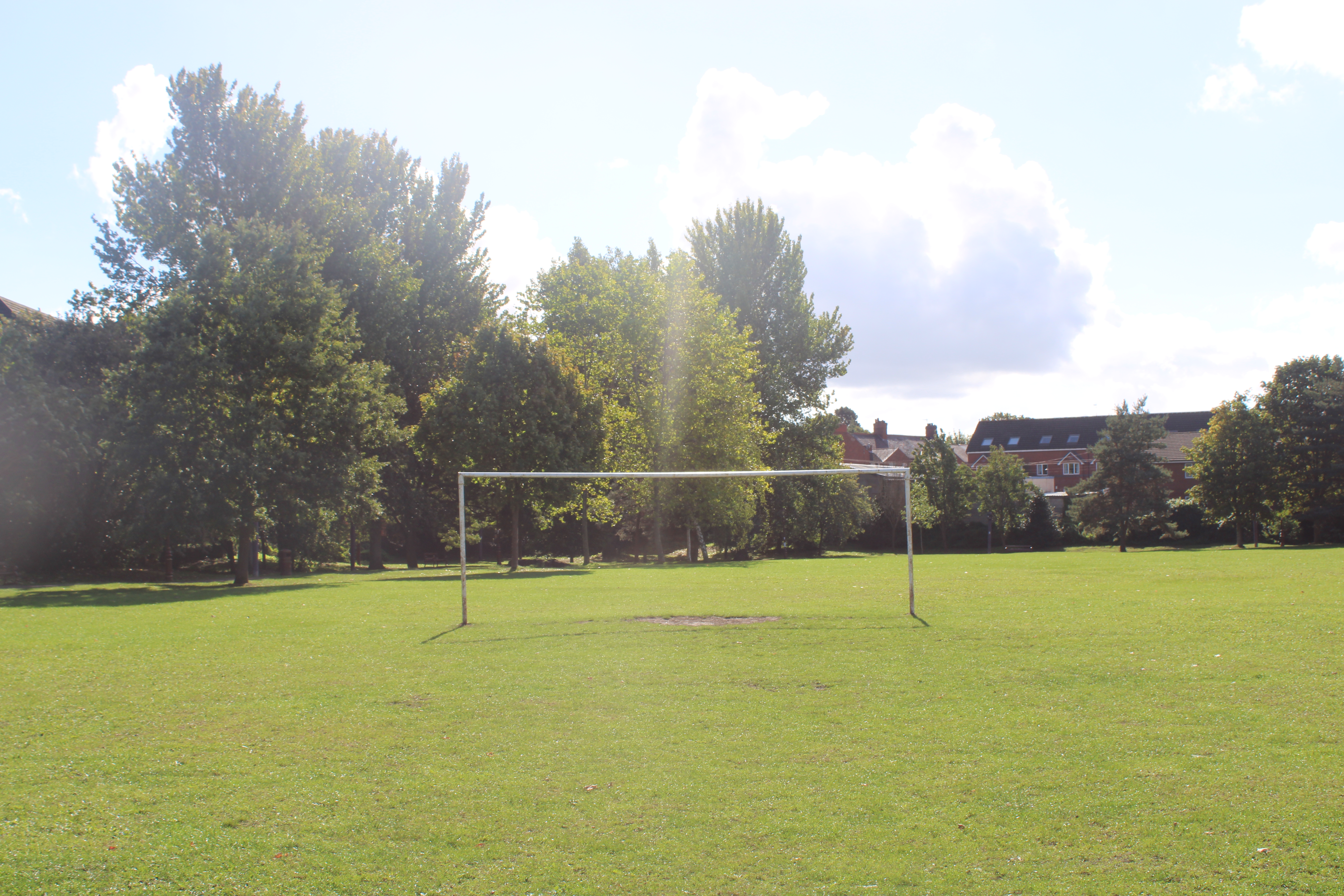
There’s a banner on the front of the Mine Rescue: “Saving a building built to save people.” A developer wanted to tear this place down to build apartments — he even drove a JCB through the back of the structure — but it’s still standing. George Powell bought it because his friend asked him to, he told me, as he took me on a brief tour. George owns a construction company that reeled in half a million pounds in business after he impressed a British home retail outlet with his ability to install kitchen modeling. He’d promised his wife a new kitchen, but procrastinated, and instead of waiting weeks for one to ship, had convinced a big-box to let him take one of their in-store units. The speed and deftness with which he later replaced it led to contracts all throughout the United Kingdom. He submitted this story as an example of the unthinkable paths that life sometimes needs to take in order for it to work out…you know, like two Hollywood stars purchasing a football club he’s rooted for since in boyhood in the 1970s. George’s eyes tended to turn glassy remembering those days, when Wrexham sometimes lined up against the likes of Liverpool, and matches were so lawless that home and away supporters would swap sections at the half, in order to make sure they were always lining up behind their team’s attacking goal.
George never went down a shaft in his youth. But like everyone else around here, he knows the stories, and he knows what went on at the Mine Rescue, which, to the larger public, might be best imagined as a Fire Department for colliery emergencies. Where the newly-opened wall now rests, there were once hundreds of cages of carbon monoxide-testing canaries. Beyond today’s visitor’s kitchenette, where I ate a cheese and spinach omelet and sipped on a black coffee, there were rooms that once pumped in smoke to simulate the disorientation a team would face in the line of duty, and there still rested a wooden, 65-inch humanoid, which the brigade took turns practicing “saving.” On some walls of the training ground, there were clipped conversations written in chalk — the only way that the men could communicate when hooked to their 35-pound oxygen tanks. They were preparing for explosions, of the sort that were always inevitable in this part of the world, but generally only took two or three souls at a time. Gresford was different. At 2:08 in the morning, September 22nd, 1934, a build-up of “firedamp” (an old word for the accumulation of highly flammable gas) led to a blast in the Dennis section of the Gresford colliery. The initial explosion led to three more, and an expansive fire, which burned the shafts’ wooden ladders and trapped hundreds of miners below. Only six from that area emerged at the pit head, where they were met by reporters and overnight widows and rescue brigades, like this one, hailing from miles in every direction.
The United Kingdom can recall its 20th century mining disasters with simple place names, the way Americans know their 21st century shootings. Gresford means something; so too does Aberfan, Senghenydd, Golborne, Egremont. The details are always hard to believe — no one wants to imagine a spoil tip swallowing classrooms, or a group of men surviving five days below ground thanks to a fortuitous borehole. When Gresford happened, it was difficult to convince the region’s civil officers and colliery viewers of the scope of the tragedy. They campaigned against the truth — not because they were distraught, but because they feared the full darkness of their underground graft brought into light. The family of Henry Dyke Dennis, Gresford’s company managing director, had urged the miners to increase profitability by dangerous means, including shotfiring. (Dynamite.) The practice most likely contributed to the disaster. After the tragedy, the managers insisted that the writers were inflating the death count; they refused to pay the families of the dead for the night’s work (these men rotted with coins in their pockets), showing more concern for the loss of their pit ponies, and permanently sealed the destroyed sections of the colliery, entombing 255 men in hell, thousands of feet below the surface of the earth. Eventually, they had to acknowledge the veracity of the death count — the punch clocks and missing equipment in the locker room was proof enough — while the region took a woeful, beautiful solace in the reason that so many had died, that so many more than usual were down there on a Friday, in the middle of the night: there was a match to be played that Saturday afternoon, in Wrexham. What little time these men did have above the earth, they wanted to spend watching their Red Dragons. Of the 267 who died when an explosion ripped through the Gresford colliery, most were Wrexham fans.
That someone would’ve ever wanted to destroy the Mine Rescue is an unsolvable mystery to someone like George, who, a few years back, won the North Wales Police and Crime Commissioner’s Gold Award for establishing a program that trains disadvantaged young people in cookery, nutrition, art, bricklaying, plastering and painting. At the time, George said: “I believe in the future of our community. It’s where I live, where my son and daughters live and where my grandchildren are growing up. The question is why would anyone not want to do something for their community?” George also looks after two adult men with special needs, named Stuart and Christopher, on rotating shifts throughout the week. During peak quarantine, he was with them for months at a time, bathing them and putting them to bed. They had a fun time, he said, all the guys holed up together. It isn’t in George’s character to seethe, but you can see him rattle at the thought of those who prioritize profit over reflection, yet another theme that binds mining and football in the town. George was part of the board that voted in favor of Reynolds and McElhenney acquiring Wrexham AFC; they’d saved the club from an owner determined to raze the Racecourse Ground and develop real estate (a villain from a 1980s film with 30% approval on Rotten Tomatoes, apparently). When the owner’s plans were made public, Wrexhamites marched, raised money, even followed him on vacation. Unable to stand their heckles for another moment (while taking in a horse race), he threw a cocktail napkin at the supporters. It read: “Fine. I fucking quit.”
The ensuing years took a village — George recalled one frantic day where he drove to Manchester to pick up emergency jerseys, ferried them to Liverpool to get them printed, and arrived back in Wrexham just hours before the match started. This wasn’t sustainable. There was no money to bring in new players. The ones that were already there weren’t getting paid on time. Still: it was just enough, somehow, for a town in desperate need of a cosmic break to eventually get one. And crucially, that break hasn’t arrived at the expense of Wrexham’s soul. George wants Wrexham to be promoted, obviously. But as excited as he or anyone else around here is about the club’s future, the club remains its pasts — its most painful hours. That’s why people care so much. That’s why they cheer and cry and fight. The mines are closed now, but the club is still here. It’s a living memory, the easiest way to remember the things they should never forget. The new co-chairmen have money and camera crews. They got TikTok on the phone, then got the logo on their red jerseys. But for many people in this town, it’s the respect that they’ve shown thus far that’s their greatest asset. Reynolds and McElhenney registered Wrexham’s non-negotiable mythos enough to reference it in their mission statement. After another all-important bullet, “Guarantee the club cannot be relocated, renamed or rebranded,” they wrote: “Appropriate and respectful observance of the Gresford Colliery Disaster will remain sacrosanct.”
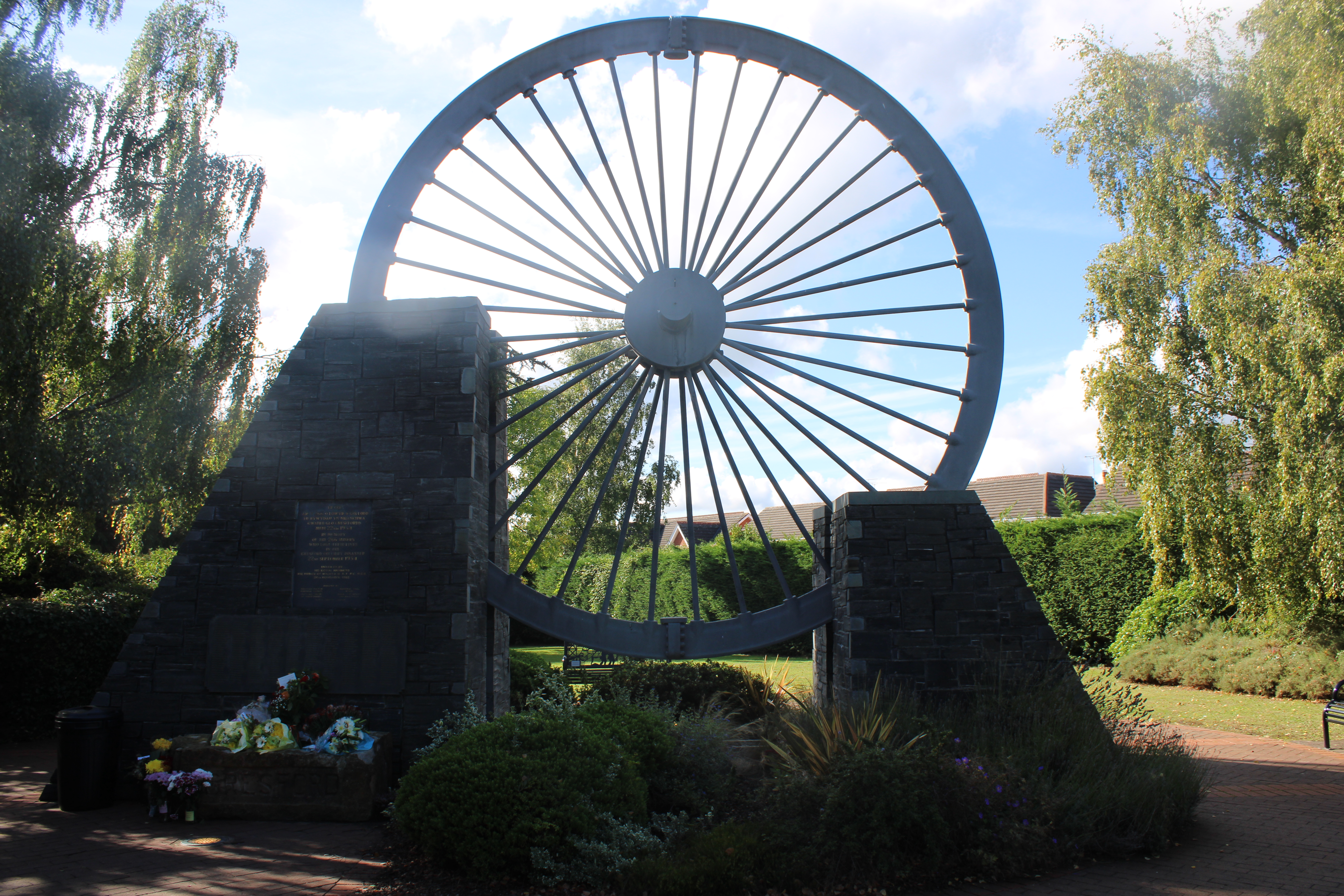
George drove me to Gresford after showing me around the Mine Rescue, because I’d asked if it was close enough to walk, which it wasn’t. He made a call on his flip phone, making sure he had a bit of time before he had to complete some errands, then brought me on the highway. He was a little tapped; he’d been on duty with Stuart the night before, and hadn’t been able to sleep, so he’d put on the latest episode of Welcome to Wrexham at 3 a.m. Like everyone else in Wrexham, he’s still mildly shellshocked to see people he’s known all his life on television. If so much as a mother’s elbow appears in the back of a shot, family group chats erupt in pandemonium. The airing of the series sent the town back to the beginning of an era so surreal it feels like it was word-generated by one of those enterprising A.I. bots. Deadpool plus pub culture plus Disney. We arrived at Gresford, where there’s a pit wheel to remember the lost (once visited by King Charles, then the Prince of Wales), and after a few moments of walking around the memorial, George recommended that we drive to Bersham Colliery, as well, the very last of the mines in the Denbighshire Coalfield, which, at its peak, employed 12,000 mean across 38 collieries. It wasn’t far, but when we got there, he had to take a call, and told me he’d arrange for a friend to walk me around the abandoned engine house and eventually drive me home. I looked around. We were in an empty car park, by a highway, in a pasture, in the middle of Wales. I said that worked just fine.
Alan Jones arrived 15 minutes later, in a good mood. Not just because he was spending another day in the most alternate of realities, where Hollywood stars Ryan Reynolds and Rob McElhenney owned his beloved football club. (He invokes them as often as he does his own children, and refers to them colloquially: Ryan and Rob.) He’s a jolly man in general, with a bear-like build, thick glasses, and two tufts of hair that spring from the wedges where his ears met his temples. As we moved around the site with his wife Margaret, his pants seemed determined to slip to the floor. He joked that he must’ve lost some weight. Jones is 76-years-old, and still works — as a steward for horse racing events, as a purveyor for construction projects around Wrexham, and when he finds the hours, as a beekeeper — but he spends as much time as possible collecting wheels, gears, tools and carts from the dozens of long-shuttered collieries throughout Wales. He’s on the board of the North Wales Miners Association Trust, which has spent years lobbying borough councils to preserve mine shaft headgear and retelling the stories of the men whose bones were buried in coal. Alan wasn’t there the day it happened (he was born after World War II, and he tended eight-hour shifts for almost eight years), but as a de facto keeper of the keys to North Wales mining history, and one who doesn’t know how much longer he’ll be around, preserving the memory of Gresford is paramount. When the Kop is renovated at the Racecourse Ground — a multi-year effort that will add thousands of seats to the stadium, alongside public revamps, like improvements at the train station next store — the project will erect Gresford’s sister wheel (the one not currently serving as a memorial) at the front of a new entrance. Alan currently keeps watch over it, in a nearby ravine.
I found it difficult to keep track of everything Alan and Margaret taught me on my impromptu tour through Bersham; we progressed from their makeshift museum downstairs, which they keep open on Sundays in the summer for those still eager to learn about the old ways, to the original electric winding machine upstairs, which was once responsible for sending man after man into the depths below. Margaret showed me old candles made of animal wax; a miner named John Evans once survived 12 days while stuck below the surface, drinking the very water that trapped him there and eating the candles in his pack. Alan rolled out a replica of the electrical signal system that they would’ve used down below, to send message along wires in the dark shafts. Both husband and wife sometimes interrupted themselves to tell stories that had nothing to do with mining history. Alan: laughing about the time when he worked at a leathery and dated a fish monger (anywhere they went, they always seemed to be alone), and Margaret: a family trip to Lake Placid that evidently went off the rails. But there was one quote that they told me together, and quietly, as if they’d been waiting for the correct moment. It sent chills down my spine. “Not worth the light.” It’s an old expression familiar to those who grew up around the coalfields. They were showing me old pictographs of family mining units, from the early 19th century. Subsistence mining — dad, mom, kids, loading chunks of coal onto tiny trolleys. Children as young as eight spent six days of the week underground, collecting the stuff. On Sundays, they’d spend the entire day in school. They grew up with the understanding that this was life. It was necessary, it was hard, and they would rarely feel the sun on their faces, let alone the rain.
For people who’ve been reminded over and over that they’re not worth much of anything, Wrexhamites are an awfully thoughtful bunch. When Alan asked what I was doing for dinner, and I replied that I’d probably just grab something from the inn in town, he invited me on the spot to the North Wales Miners Association Trust’s anniversary dinner. Margaret agreed. No one should have to spend a night in a hotel room alone when far from home, she said. They picked me up at six, another couple in the backseat, everyone dressed up, me in the one T-shirt that didn’t smell like United Airlines, and we ended up at a community rec center, right in the same park as the Gresford memorial, which had Foster’s on tap, a table of turkey sandwiches and cheese puffs, mid-aughts pop blaring from the speakers, a pool table in the back, and all over the walls, paraphernalia honoring Welsh sporting legends, most of them rugby heroes. George arrived, happy to see me again, and he and Alan introduced me to some of their friends, one of whom was named Chris Pugh. He’d lost his grandfather in Gresford. Beers flowed and new friends filtered in and out; everyone seemed confident that Wrexham would be promoted in spring of 2023, no one had an ill word to say about Reynolds or McElhenney (I felt like a snake for even asking.) The night ended, inevitably, at The Turf, the 150-year-old — or something, nobody really knows — pub located on the same property of the Racecourse Ground. It’s the oldest public house at any stadium in the world. I can’t say for sure what happened there. I remember posing for pictures and not knowing how to speak Welsh. I slept soundly that night. Through every last chime.
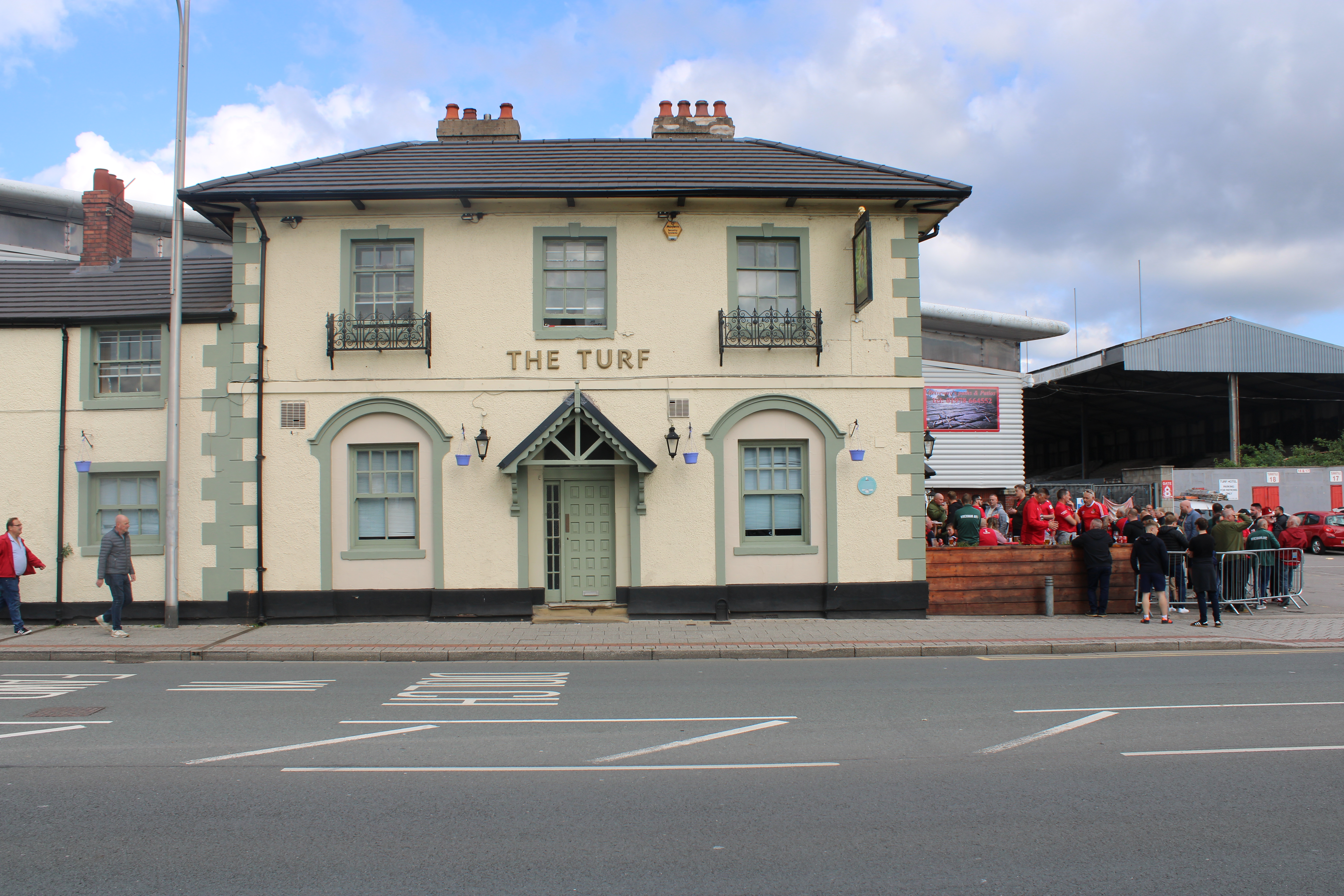
I had a bit of a logistical crunch on Saturday morning, the day of the match. Check-out from the Wynnstay Arms was at 11 a.m., the match was at 3 p.m., and my train back to London was at 7:45 p.m. I needed somewhere to put my luggage. George offered up the Mine Rescue, as if I’d stayed in town for the better part of a month, as opposed to 48 hours. I met a man named Will during breakfast in the kitchenette; he was the building’s handyman, and he regretted missing the commotion of the night before. He’d heard I was from New York, and mere moments after shaking my hand, pulled up his sleeve to reveal a barbed wire tattoo, wrapped around his left bicep. He was in the city during 9/11. Pure happenstance, he told me. He’d helped out down at Ground Zero. In 2003, he’d gone back to the same bar he’d frequented during that time, and was served by the same bartender; the man had recognized him, which shocked him. The thick Welsh accent was the giveaway, but the other detail featured prominently, too: Will was the only non-cop or firefighter he’d poured a beer for in those days after the towers fell. We talked about this for a few minutes. I told him I was young when it happened, but had lost people from my town. People’s dads, people I looked up to, people I’d played baseball with. Football and mining, baseball and firefighting — above the new commemorative wall, just beyond Will’s shoulder, were the words “Never Forget.” He wiped his eyes and laughed, telling me he needed a cigarette before he got too emotional. I told him to come back to New York when he could.
I was ready to leave for the game — I was due early in the press box — when a man named Keith Hett arrived. Alan called me outside to introduce me. He was walking his dog, Milo, who was tiny and dignified like his owner. Keith sported a weathered ballcap, wore a STAND WITH UKRAINE pin on the left lapel of his jacket, and nodded with a warm and silent smile as Alan explained who he was: a local leader of miners’ strikes in the 1970s, back when subsidies first started drying out, pay stagnated, collieries closed down and the UK began shopping for cheaper coal abroad. This was the early dawn of Thatcher’s privatization efforts (they call her “the witch” around here…and worse) and the end of a life that none of these men had ever asked for, but understandably, had no clue know how to live without. But taking a stand at that crossroads meant something then, so it still does now; Keith is beloved around town, and fielded multiple sidewalk hellos in my few minutes with him. He was the very last man to emerge from the Bersham shaft, in 1986. The last miner of North Wales. His son, Scoot Hett, lead singer of The Declan Swans, wrote the song that Wrexham fans have bellowed ever since their news owners took over the club:
Less than a mile from the centre of Town
A famous Old stadium crumbling down
No-one’s invested so much as a penny
Bring on the Deadpool and Rob McElhenney
They sang it throughout the tailgate outside The Turf, they sang it as Wrexham undressed Torquay to a final result of 6-0 (Phil’s prediction proved correct, technically — I didn’t see a “five-nil match”), and they sang it while leaving the stadium, crowding the street together, heading for home, or the train, or the Kentucky, or whatever they always do. There was no light for them, not at this point in the day, but there wasn’t much loneliness to go around either, and you could sense that they knew that. They knew they had it made. I headed back to the Mine Rescue after the match to pick up my stuff. My voice was gone from cheering for a team I’d only heard about a year before, and here I was sitting with people I’d only met a day before, watching YouTube videos as dusk set in outside over the row houses and the hour before my train time whittled away. The older folks marveled at George’s ability to operate the remote. He queued up Max Boyce’s “Duw It’s Hard,” and the room sighed in anticipatory nostalgia. I could tell they’d put it on for me, and I was touched by that. I looked around the room, at the Mine Rescue’s shrine for the “unknown miner” (not everyone died in a tragedy as iconic as Gresford; some survived Germany only to die at work one day, a couple miles from home) as Boyce, a singer and comedian, a Welsh national treasure, whom the country begged to write a poem during peak quarantine, launched into his song, his best attempt to make sense of what happened in this part of the world.
I tried to hear every word. He sang of the briefcases who came from London to shut the colliery down, those people who’ve never been down below. He sang of the empty gurneys, the mining coughs that are now just souvenirs, the old helmet he took home and filled with earth and flowers, which is now hanging in his glasshouse, a “living memory,” reminding him “they could have grown in vases over me.” The refrain:
Cause it’s hard
Duw it’s hard
It’s harder than they will ever know
And it’s they must take the blame
The price of coal’s the same
But the pithead baths is a supermarket now
I listened to the song a few more times on my trip home. Wrexham is right on the border, so it wasn’t long before I’d left the country behind and was hurtling through English fields. I’d assumed the song was supposed to make me feel sad, but the strangest thing — George, Alan, Margaret and the rest of them had smiled throughout. They’d bobbed their heads, even laughed. I listened again. At the end of the first verse, reacting to news that they were closing down the mine, Boyce sang: “But don’t you worry butty bach. We’re really very glad.” Everything’s hard in Wrexham. It’s been that way for a long time. But maybe that makes it easier to live in the shimmers, to love what lasts and what doesn’t, what’s been taken from you and what you’ve managed to save. What’s worse? Losing joy or holding on to pain? Here in North Wales, they don’t choose. They’ll take the sun and the rain and anything in between.
Whether you’re looking to get into shape, or just get out of a funk, The Charge has got you covered. Sign up for our new wellness newsletter today.

